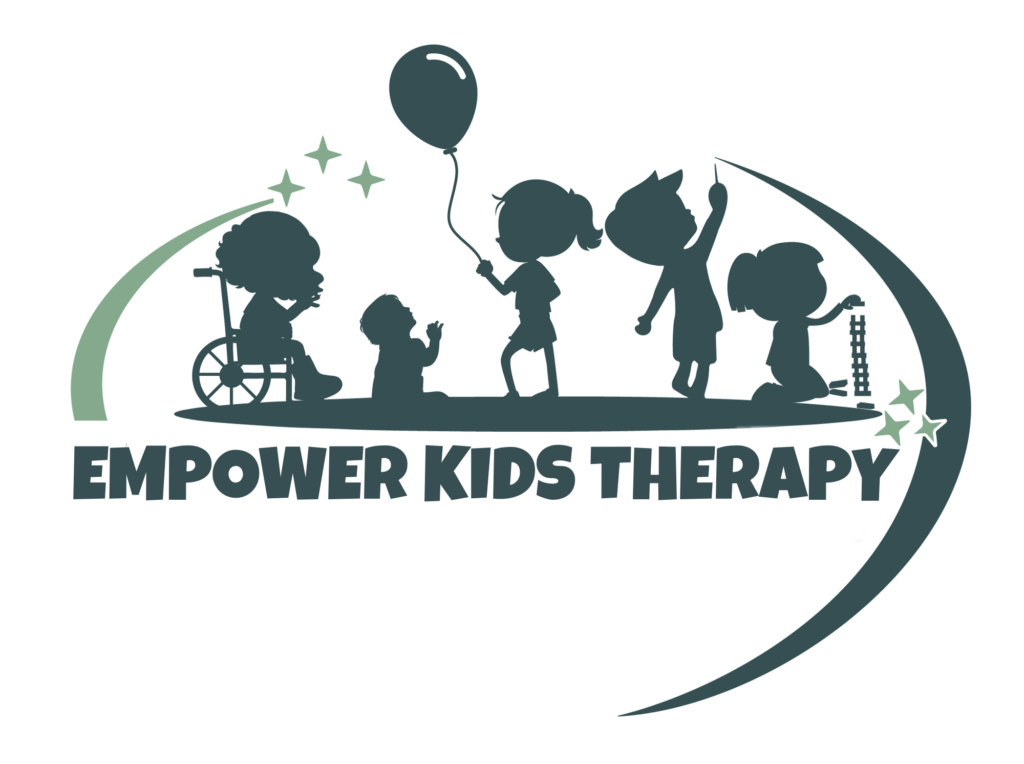Halloween is a favorite tradition for both kids and adults alike! But there’s a reason why the season is so spooky… other than the ghouls and ghosts!
If your child often confronts sensory processing challenges in daily life, Halloween may seem like an unimaginable experience for them.
Sensory processing refers to how individuals interpret and respond to sensory information from their environment. This includes sights, sounds, smells, tastes, textures, and movement.
Halloween festivities typically include meeting many new people (trick or treating), being in unfamiliar spaces (going to a party), eating new flavors and textures (funky candy treats), and feeling new textures (wearing uncomfortable costumes). And that’s just the beginning! What makes the holiday so fun can often be what presents the biggest hurdles for families conquering sensory processing challenges.
Read on for some occupational therapy tips and tricks I throw in the cauldron to cook up a smooth Halloween!
BEFORE THE MONSTER MASH
- Choose a costume together.
- Involve your child in the decision-making process so 1.) they can have ownership in a strange set of new clothes and 2.) they feel proud and excited to wear the costume!
- Lean towards familiar fabrics instead of itchy and bothersome textures to ensure long-lasting comfort. Maybe make your own costume out of clothing already in the closet! For Disney lovers, think “Disneybounding,” or wearing everyday clothing pieces to resemble a character.
- Be wary of face paint. Adding makeup to your child’s face, or wearing masks can alter their line of sight making it easier to trip and fall. Plus, if the paint doesn’t go over well, it’s more difficult to remove while on the haunt!
- Run a dress rehearsal.
- Allow your child test runs in their costume. Multiple interactions with it will make the costume feel less intimidating, less strange, and more comfortable when Halloween finally comes. You’ll also be able to pinpoint sections that cause discomfort and remedy the issues early on.
- Practice trick or treating around the house so the action is familiar on the day of. Repetition is always key!
- Trust their judgment.
- If your child expresses that they are unable to wear a particular part of a costume, do not force them to suffer through. No picture is worth a painful experience.
- Discuss expectations.
- Give your child a preview of the evening so they know what to expect on the night of. Surprises are often what causes confusion and anxiety. If your child knows how the night will play out, they’ll be able to relax into the run of show.
WHEN THE GHOULS START TO CRAWL
- Start the festivities in daylight.
- The sun sets earlier in October. Be sure to plan accordingly so you’re not left in the dark… new experiences are surely more scary without the sun!
- Encourage self-regulating strategies.
- Overstimulation often leads to anxious kiddos. Be sure to equip your child with calming strategies before leaving the house. For example, utilize breathing techniques, mindfulness strategies, or sensory breaks to calm down and recharge.
- Meet new experiences with patience and kindness.
- Encourage your child to try a new candy, or say hi to the little friend dressed up like a pumpkin! However, we never want to force these interactions. Always lead with gentleness.
WHEN THINGS GET HAIRY (like Cousin ITT)
- Know the signs.
- Part observation, part intuition. You can often tell when an environment has become too much and it is time to go. Trust your instinct and don’t force the situation!
- Pack a backup outfit in case the costume becomes unbearable.
- Make sure your child knows this option is available to them at the beginning of the night.
- Always have an exit strategy.
- Create a plan in advance so when the signs start to show, you aren’t scrambling to make an exit. Use a keyword or phrase your child can say to you if they would like to leave.
A BACK UP PLAN
Halloween doesn’t have to be just trick or treating house to house. Here’s some alternative ways you can enjoy the festivities!
- Watch a movie.
- There are countless new and classic movies to get your family in the spirit! Here are a few of my favorites: The Nightmare Before Christmas (1993), Hocus Pocus (1993), Halloweentown (1998), Hotel Transylvania (2012), Casper (1995), It’s the Great Pumpkin, Charlie Brown (1966) and more!
- Exposing your child to festive movies throughout the month can also make them feel more accustomed to traditions and less surprised about what they might encounter on the day of.
- Trick or treat inside the house.
- Exposure to this fun activity indoors may help open up the possibility of trick or treating outdoors the following year! You can even invite friends to join in by decorating doors of your home, and roleplaying trick or treater VS candy passer.
- Make a fun edible treat.
- This is a great way to continue working on sensory processing in a festive type of way while in a comfortable space. Get hands on with new textures, colors and flavors.
- Check out this reel for fun recipe ideas!
REMEMBER
The spookiest part for our kiddos is the unfamiliar. The key to unlocking the fun is introducing these new concepts, ideas, flavors, fabric textures, etc. early and being communicative about what the experience may be like! Empower your child, whether they dress as a Superhero or not!










